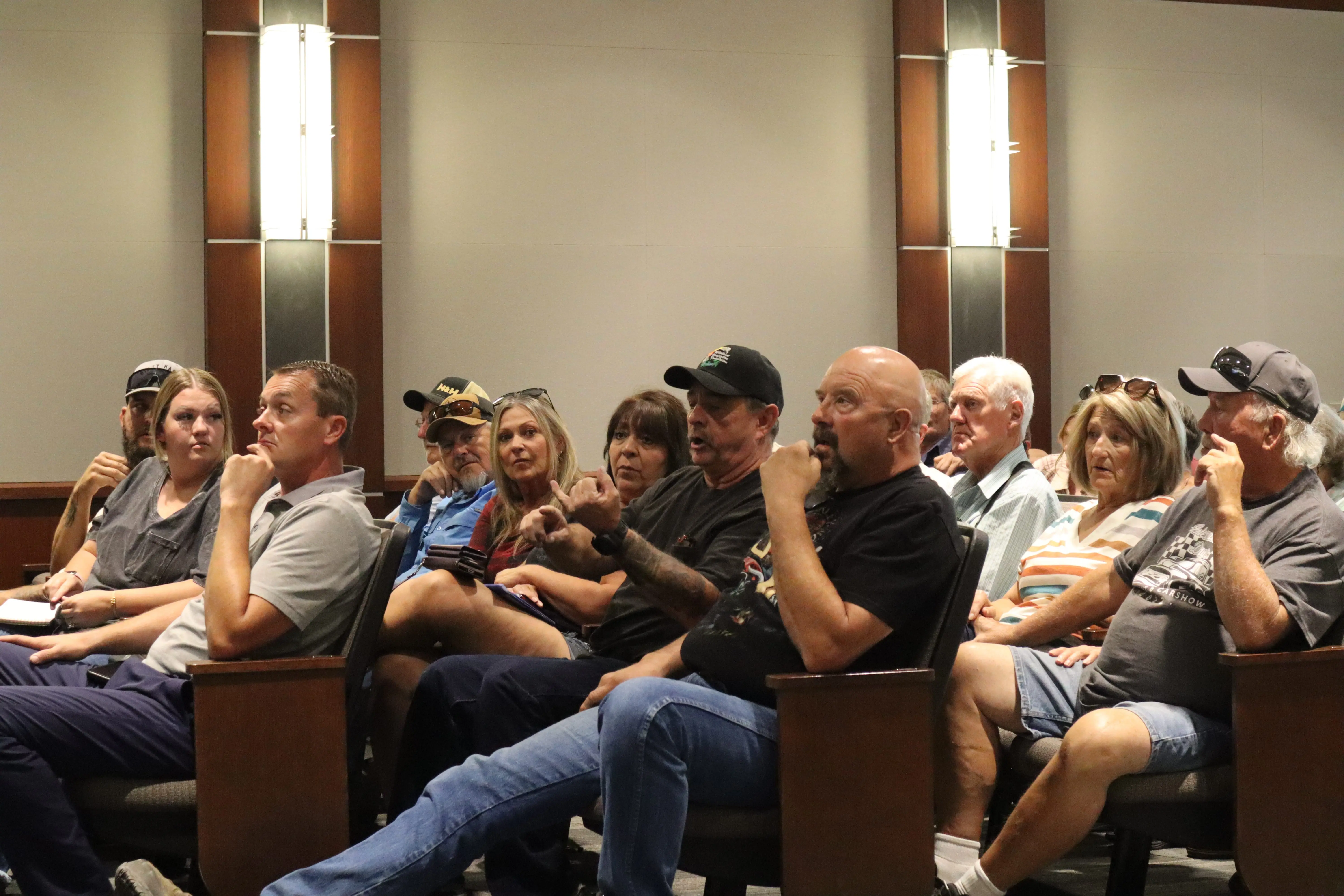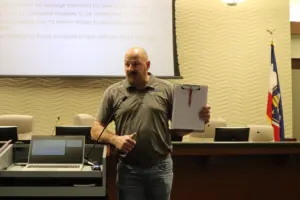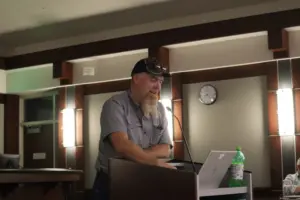
By Aidan Mortensen | KOAL News
A frantic flurry of voices filled the Carbon County Commission Chamber as residents of the county arrived en masse for an update on the recent flash floods that impacted Carbonville and portions of Price.
Carbon County Emergency Manager Justin Needles opened the meeting, discussing the county’s preparedness shortfalls and the steps they are taking to move forward. First, Needles addressed potential Federal Emergency Management Agency funding,” there is a local disaster, and then there’s a Statewide disaster. So, for Carbon County to go to FEMA and say we need money, not only do we have to hit our local threshold, we have to hit the statewide threshold.”
Needles continued, sharing an alternative to FEMA funds,” the one source of funding that we do have the option of is the National Resource Conservation Service. They have a program called Emergency Watershed Protection, and so that EWP funding is available for us to apply for.” He added,” We hope to get funding there, too. To do that, it’s not a quick process. They say they want the project done, like 240 days from the time you get the money. But there’s so much red tape that it generally takes us about a year and a half to two years from the time we get the funding.”
Another issue mentioned by Needles is the lack of weather radar systems in the area. He explained that there are three Doppler radar systems surrounding the area: one in Cedar City, one in Grand Junction, and one in Salt Lake City. This creates what Needles describes as a ‘Bermuda Triangle’ around the Castle Country for weather prediction.
To alleviate this, the county has searched for a partner to place a Doppler radar on Cedar Mountain to help improve the weather prediction for the area.
Closing his time, Needles encouraged residents to fill out a survey from Carbon County Emergency Management to help assess the damage caused by the flood throughout the county.

Next to the podium for the county was Lincoln Irvine, who attempted to summarize the recent floods. He noted that the county has currently identified problems such as canal overtopping and an overload of maintenance work, sharing that the damage survey had already collected 93 responses. As he presented, the crowd grew agitated, beginning to shout at Irvine and the elected officials in attendance.
“You guys are all just trying to blow smoke up our (expletive),” said one participant. Another shouted,” The County gave me no help.” Interwoven between the yells of citizens was a consensus that the county had not done enough to help the residents of Carbonville and that they were acting “reactively” instead of “proactively.”
Commissioner Larry Jensen jumped in, attempting to answer some questions being asked. One citizen asked,” Yes or no, have you directed water that was heading toward the coves to Carbonville? ” Jensen responded with a ‘no’.
Irvine continued following the interruptions, explaining that portions of the current infrastructure were built to handle a 25-year, one-hour storm event, but that the area had experienced two consecutive years of significant storms.
Following Irvine was Dave Horsley, who presented on the hydrology of the storm and potential solutions for the county. He explained that on an average day, the canal sees an average of 40-60 cubic feet per second of flow. On the day of the flood, the canal requested 20 CFS, but contained 28 CFS, a discrepancy that Horsley noted is “Often takes place.”
Presenting a rough timeline of events, at approximately 11:04 a.m., the National Weather Service sent out a flood warning. By 11:45 p.m., canal representatives had turned off the head of the canal. At noon, both the Warehouse Wash and Jensen Dump Gates were opened.
Identifying problem points, Horsley discussed the two railroad culverts that overflowed, with the railroad helping to create a dam, forcing water out of containment and onto the streets. Combined with other points, there is a potential for 400 CFS of water to hit all at once, contributing to the flooding.
As for potential solutions, Horsley proposed collaboration between local groups, private citizens and governmental organizations to work together to find mitigation solutions. He also discussed the potential benefits of constructing detention basins, a series of berms to help slow the flow of water and echoed Needle’s earlier point about the need for better weather detection systems for the area.
Horsley also encouraged residents to take steps to protect themselves from these floods by taking actions such as cleaning out ditches, raising grass or constructing retaining walls.
“I believe we all know we’ve got a problem,” said Horsley. “My hope is we don’t look back to the past. We all have our whole issues, and hopefully we can invite people to come to the table.”
Commissioner Jensen again addressed the crowd to close the meeting,” The County’s committed to working on this. The NRCS has been contacted, so we expect they’ll come and bring their team of engineers to look at it. They will make recommendations on what they will help fund.”
He finished by stating that the county would continue cleanup efforts in the impacted areas.

